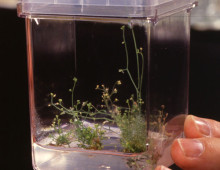Macondo wellhead metagenomes
The 2010 Deepwater Horizon oil spill presented researchers with an opportunity to employ a variety of approaches to quantify and model the microbial community composition and activity through successive metabolic petroleum hydrocarbon degradation. The Macondo wellhead oil leak, in the Gulf of Mexico, released a complex mixture of hydrocarbons into the water column that stimulated… [Read More]

